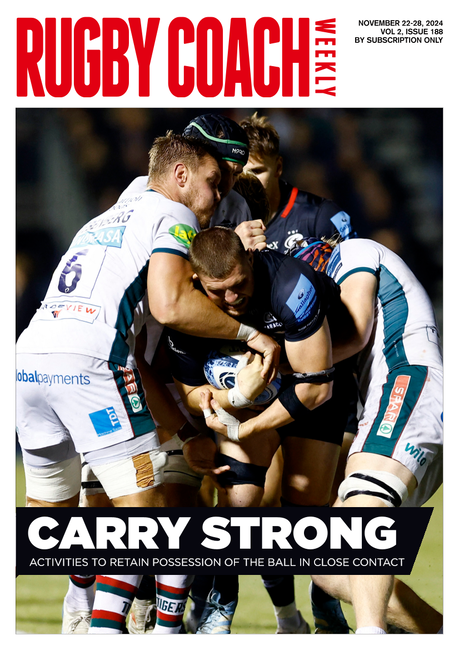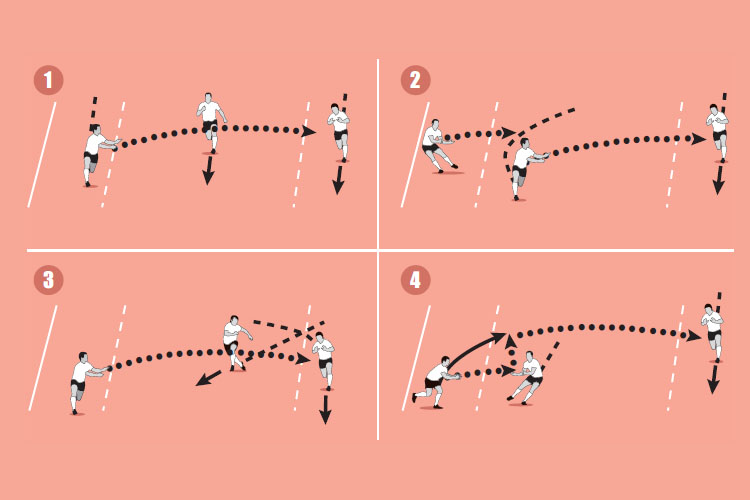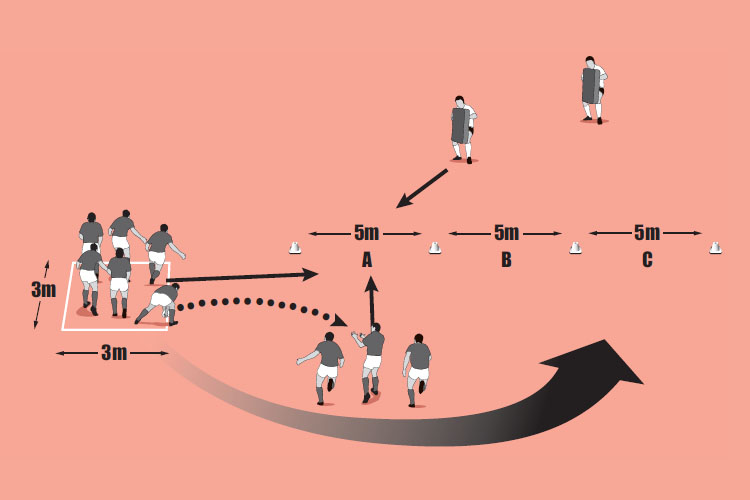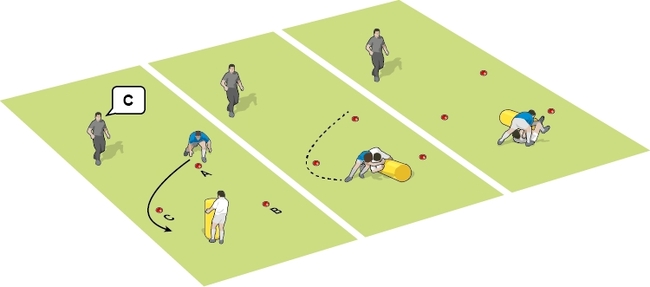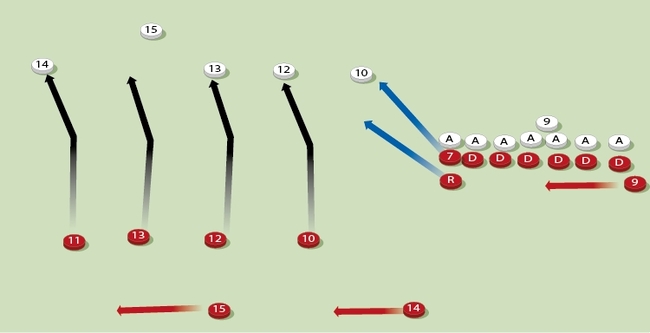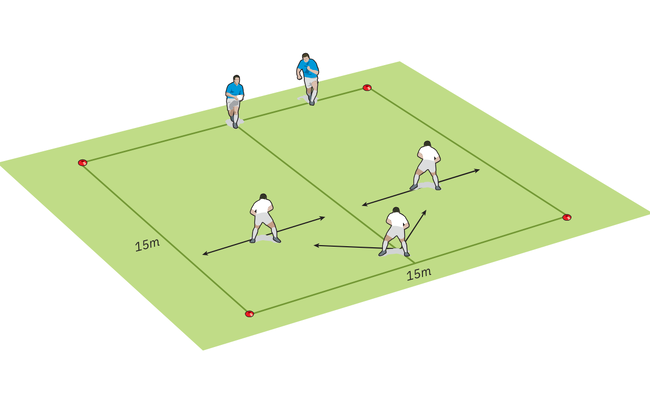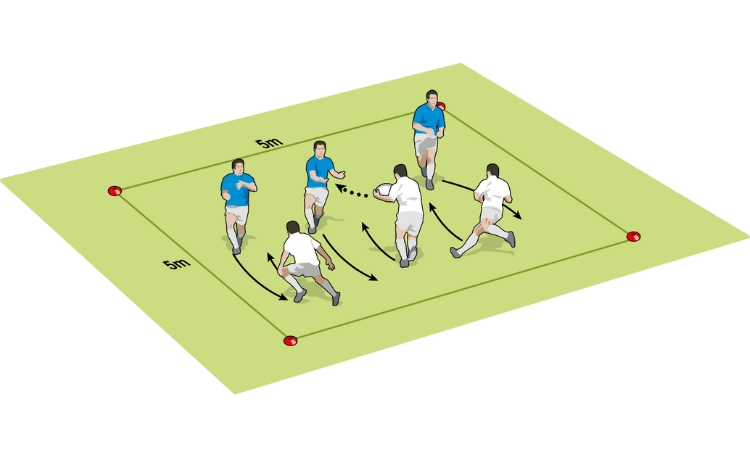Out of the blocks
Organisation and line speed are the foundations of an offensive defence. Pressure created by denying the opposition time and space can frequently result in errors, forcing turnovers often without having to make a tackle. The blitz defence in particular is based on this principle.
Warm up time: 5-7
Session time: 10-15
Development time: 10-15
Game time: 10-15
Warm down time: 5-7
What to think about
When would you want to use this system?
The blitz defence is where your players aggressively move forward and close down the space outside the ball carrier. It is about creating pressure on the ball carrier by closing down his space and reducing the time he has to make decisions.
There is an element of risk to the defensive team in that the opposition can get the ball wide if they are skilled enough. However an effective blitz forces errors by challenging attackers to perform these skills under pressure. It can have a dramatic effect, particularly in wet conditions.
The blitz is a whole team system, which relies on organisation and line speed. It can break down if even one player does not understand his role.
set-up
- Line up on the outside of your opponent’s outside shoulder, with your outside foot forward.
- Line speed depends on organising and getting into position quickly and efficiently.
- Get out of the blocks quickly. As soon as the attacking 9 places his hands on the ball “take off”, up and in. The outside players must work hardest to close down the space.
What you get your players to do
Organise your players into groups of three. Layout five rows of four cones, as the first picture. On your call, the players shuffle laterally one cone, getting outside their imaginary opponent and into a prepared defensive body position, like a sprinter. Touch a ball as the next trigger. Players explode “out of the blocks” and run diagonally forward two rows. They then quickly back pedal one row diagonally. Meanwhile the next group assumes the prepared position on the first row. Each group completes three sprints, before resting. Practise blitzing in from both sides.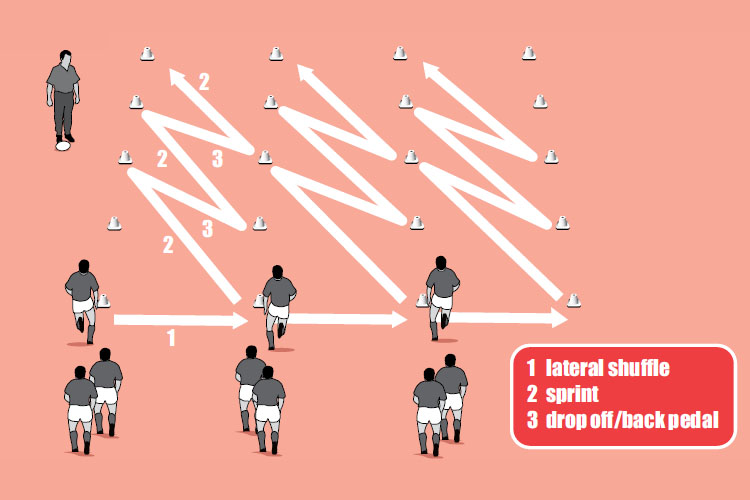
Development
Set up two defenders and four attackers, as the middle picture. The two defenders assume prepared positions outside attackers 2 and 3. Attacker 1 acts as half back and triggers the defence by passing off the ground to attacker 2. The defenders prevent the ball getting to attacker 4 by using line speed to put pressure on attackers 2 and 3 only. Allow the attackers six goes before swapping the players.Related Files
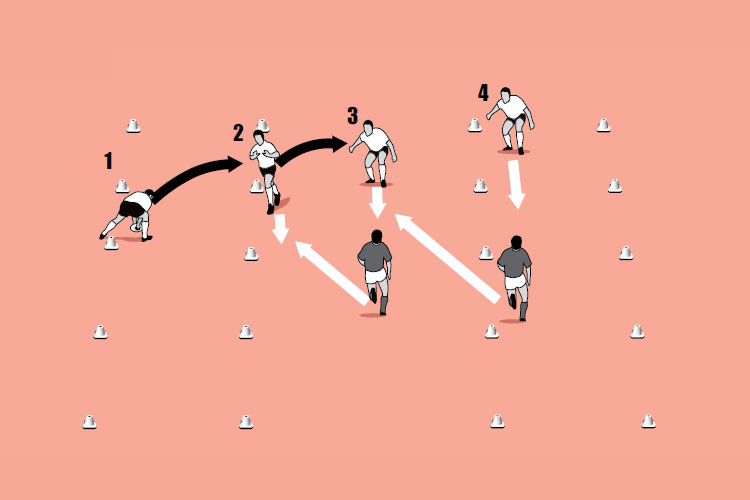
Game situation
Split into groups of eight, with four attackers and four defenders. Call numbers for the attack and defence, for instance “3 v 2”, “4 v 3”. Always have at least one more attacker than defender. Players move quickly to their start positions, defenders numbering up from the inside. Release the ball. Defenders must stop the ball getting to the outside attacker by pressurising the inside attackers with line speed.What to call out
- “Get outside your man”
- “Get out of the blocks”
- “Think triggers”
Newsletter Sign Up
Coaches Testimonials

Gerald Kearney, Downtown Las Vegas Soccer Club

Paul Butler, Florida, USA

Rick Shields, Springboro, USA

Tony Green, Pierrefonds Titans, Quebec, Canada
Subscribe Today
Be a more effective, more successful rugby coach
In a recent survey 89% of subscribers said Rugby Coach Weekly makes them more confident, 91% said Rugby Coach Weekly makes them a more effective coach and 93% said Rugby Coach Weekly makes them more inspired.
Get Weekly Inspiration
All the latest techniques and approaches
Rugby Coach Weekly offers proven and easy to use rugby drills, coaching sessions, practice plans, small-sided games, warm-ups, training tips and advice.
We've been at the cutting edge of rugby coaching since we launched in 2005, creating resources for the grassroots youth coach, following best practice from around the world and insights from the professional game.



